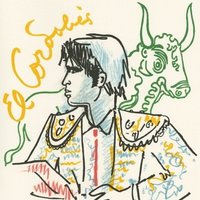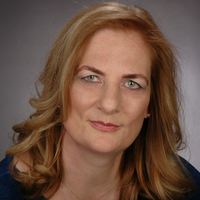
Frédéric Gimello-Mesplomb
Frédéric Gimello-Mesplomb is a Professor of Information and Communication Sciences, Media and Cultural Studies at the University of Avignon, France. His research focuses on Media economics and audience studies. His work investigates the effects of public support on cultural consumption, such as emerging film and cultural funds. He delves into the evaluation methods and criteria used by Select Committees for supporting the Arts, incorporating empirical policy-relevant research that spans cultural norms and the assessment of quality over time within public funding frameworks. Frédéric's research also examines the characterization of popular culture audiences and the consumption patterns of artistic-cultural goods. Since 2003, Frédéric has contributed his expertise to several organizations, including the European Commission, Belgium's FNRS, Luxembourg's Ministry of Education, and France's ANR. He has been a Visiting Scholar at the University of California, Berkeley, and Los Angeles (1999). He has been elected in 2001 Faculty member of the National Academy of Television Arts & Sciences (Emmy Awards, USA). Moreover, he has served as a Visiting Professor at various international institutions (Italy, 2010; Florida, USA, 2010; Poland, 2011; Colombia, 2012; Lithuania, 2013; Tunisia, 2014; China, 2017), showcasing his global engagement and recognition in the field of information and communication sciences.
Phone: +33688421974
Phone: +33688421974
less
Related Authors
Hannah Lewis
The University of Texas at Austin
Chloé HUVET
Evry University
Josep Lluís i Falcó
Universitat de Barcelona
Luíza Alvim
Universidade de São Paulo
Hans J. Wulff
Christian-Albrechts-Universität zu Kiel
Claudia Bullerjahn
Justus-Liebig-University Giessen
Emilio Audissino
Linnaeus University
InterestsView All (35)









Uploads
Papers by Frédéric Gimello-Mesplomb
I - A l’université d’Avignon :
*************************************
Alexandre DELORME
LES PRATIQUES TRANSMEDIATIQUES EN TERRAIN FESTIVALIER
ANALYSE COMPARÉE DES FORMES D’ENGAGEMENT ET DES SOCIABILITÉS NUMÉRIQUES Festival d'Avignon-Transmusicales de Rennes
Université d’Avignon
[Thèse Région PACA - dir. Emmanuel Ethis - F. Gimello - Coencadr. Damien Malinas]
*************************************
Mariana MEDEIROS
« Exploring interactions between representation and reception: Fashion in Film, Films of Fashion and Fashion Films in the Digital Era » (Explorer les interactions entre representation et réception : Fashion in Film, Films of Fashion et Fashion Films à l'ère numérique)
Co-dir. Pamela Church-Gibson (Univ. of London) - coencadr. H. Laurichesse (Lerass Toulouse)
[cotutelle internationale de thèse - UAPV / (University of London College of Arts (UK) ]
*************************************
Eloi FLESCH
« Les algorithmes de recommandation dans le domaine du spectacle vivant. Vers une émancipation du spectateur ?
[Thèse financée AGORANTIC - Codir. avec Juan Manuel TORRES/ Laboratoire d'Informatique d'Avignon - coencadr. E. PAMART]
*************************************
Mathieu FERRYN
« Les intermédiaires du jazz en France ou les ambivalences d’une profession. Instances de consécration et espaces de diffusion (2000-2014) »
[Thèse Cifre - Coencadr. avec Jean-Christophe SEVIN - Julie DERAMOND]
*************************************
Guy HEBELER
« Les capitales européennes de la culture face aux dynamiques de changements du marché des loisirs. Une socio-anthropologie des pratiques de sortie au Luxembourg avant et après le processus de labellisation »
[Codir. avec Pr. Jean-Marc LEVERATTO ]
*************************************
II - à l’université Paris I Panthéon-Sorbonne :
Séverine ABHERVE
« COMPOSITEUR DE MUSIQUES DE FILMS DANS L’INDUSTRIE CINEMATOGRAPHIQUE FRANÇAISE. DEFINITION, CARACTERISATION ET ENJEUX D’UN METIER EN MUTATION »
Thèse soutenue le 14 février 2011 - Qualification MCF 18° section CNU.
[Codirection avec Pr. Daniel SERCEAU]
Fatima ADOUM
« L’AVANCE SUR RECETTES, EVALUATION D’UNE POLITIQUE DE SOUTIEN AU CINEMA FRANÇAIS (1959-1990) »
Thèse soutenue le 9 décembre 2005
[Codir. Jean A. GILI et François GARCON]
1. 22.01.2018 Jessica CENDOYA 71° J. DAVALLON Avignon
2. 02.12.2017 HDR Julie AMIOT 14° N. BERTHIER Paris IV Sorbonne
3. 25.09.2017 Elisa ULLAURI 71° PRESIDENT J. DAVALLON Avignon
4. 22.09.2017 Quentin AMALOU 71° E. ETHIS Avignon
5. 29.06.2017 Noémie COUILLARD 71° PRESIDENT J. EIDELMAN Avignon
6. 09.12.2016 Raluca CALIN 71° E. ETHIS Avignon
7. 18.11.2016 HDR de Kira KITSOPANIDOU 71° Rapporteur F. MAIRESSE Paris 3 Sorbonne
8. 04.11.2016 Camille BERNETIERE 71° J. DAVALLON Avignon
9. 15.11.2016 Jian-Chung TAN 18° Rapporteur R. HUESCA Lorraine
10. 05.11 2016 David BUCHHEIT 71° S. GENVO Lorraine
11. 03.10.2016 Marie CAMBONE 71° M.S. POLI UQAM Montréal
12. 23.09.2016 Hatem KOCHBATI 71° Rapporteur P. VIALLON Strasbourg
13. 20.05.2016 Paolo CAMPETELLA 71° PRESIDENT H. GOTTESDIENER Rome 3 (Italie)
14. 20.10.2015 Florian DUPONT 71° Rapporteur L. CRETON Paris 3
15. 04.09.2015 Mariane POULANGE 71° PRESIDENT R. BOURE Toulouse II
16. 02.04.2015 HDR de Hélène LAURICHESSE (MCF 71°) 71° Rapporteur et PRESIDENT L. CRETON Toulouse II
17. 15.12.2014 Irina TCHERNEVA 19° Rapporteur V. POZNER EHESS
18. 17.11.2014 Elena RAEVSKIKH 19° Rapporteur E. PEDLER EHESS
19. 26.06.2014 Floriane GERMAIN 71° PRESIDENT C. SAOUTER /
D. JACOBI UQAM Montréal / Ecole du Louvre
20. 26.05.2014 Jean-Pierre KILA 71° E. ETHIS Avignon
21. 20.05.2014 Carine NKOULE 19° Rapporteur et PRESIDENT JM LEVERATTO Lorraine
22. 19.12.2013 Stéphanie LOUIS 22° Rapporteur et PRESIDENT C. DELAGE EHESS
23. 06.12.2013 Corneliu GHEORGHITA 18° Rapporteur G. CHAPOUILLIE Toulouse II
24. 05.12.2013 Adama OUEDRAOGO 18° Rapporteur et PRESIDENT G. CHAPOUILLIE Toulouse II
25. 27.11.2013 Laurent DARMON 71° E. ETHIS Avignon
26. 25.11.2013 Raphael ROTH 71° E. ETHIS Avignon
27. 20.11. 2013 Laurie DESON 18° Rapporteur P. BEYLOT Bordeaux III
28. 14.10. 2013 Carlos SILVEIRA 18° Rapporteur M. BARNIER Lyon II
29. 02.10.2013 HDR de Sébastien GENVO (MCF 71°) HDR
71° Pré-Rapporteur J. WALTER Lorraine
30. 01.10.2013 HDR de Carole AUROUET (MCF 71°) HDR
71° Pré-Rapporteur V. LOWY Lorraine
31. 8.07. 2013 Patrick N'DILTAH 71° Rapporteur et PRESIDENT E. ETHIS Avignon
32. 9.12.2011 Séverine ABHERVE 18° Co-directeur F. GIMELLO/D. SERCEAU Paris 1
33. 14.02.2005 Fatima ADOUM 18° Co-encadrant F. GIMELLO/J. GILI Paris 1